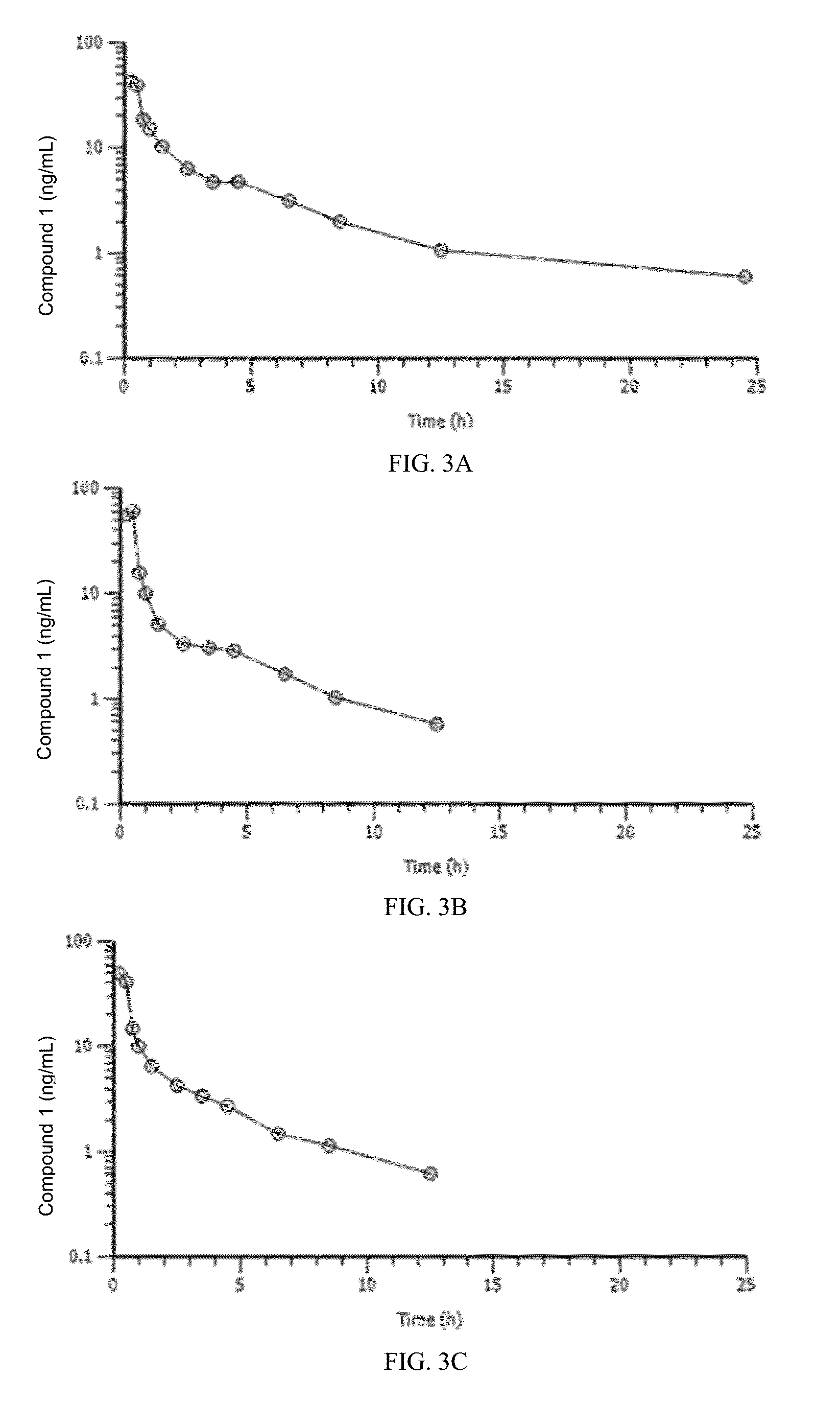CDK4/6 Inhibitor Dosage Formulations For The Protection Of Hematopoietic Stem And Progenitor Cells During Chemotherapy
a technology of cdk4/6 inhibitor and dosage formulation, which is applied in the direction of pharmaceutical delivery mechanism, organic active ingredients, dispersed delivery, etc., can solve the problems of compromising disease control and survival, requiring a reduction in chemotherapy dose intensity, and developing acute kidney injury, so as to improve the anti-tumor activity of chemotherapy and accelerate hematopoietic recovery. , the effect of preserving long-term bone marrow function
- Summary
- Abstract
- Description
- Claims
- Application Information
AI Technical Summary
Benefits of technology
Problems solved by technology
Method used
Image
Examples
example 1
Compound 1 Demonstrates a Good Drug Profile
[0361]Compound 1 was determined to be a highly potent and selective CDK4 / 6 inhibitor in in vitro and in vivo studies. Treatment of animals with Compound 1 produced a clean and transient G1 arrest in bone marrow stem and progenitor cells, which induced subtle changes in the complete blood count (CBC) following multiple daily doses. Additionally, it was demonstrated that Compound 1 treatment can protect normal cells in vitro and in vivo from the cytotoxic effects of chemotherapy and radiation. Additionally, Compound 1 is considered to have a low potential for producing adverse effects due to off-target pharmacodynamic (PD) activity.
[0362]Pharmacokinetic (PK) parameters studied in rats and dogs following IV administration showed that the relationship between dose level and plasma exposure to Compound 1 was generally similar between males and females and did not change with repeated daily dosing. Exposure to Compound 1 increased with dose level...
example 2
IV Formulation
[0368]The synthesis of Compound 1 is described in WO 2012 / 061156, incorporated in its entirety herein.
[0369]An IV formulation for use in the experiments described herein can be a sterile powder, 40 mg of Compound 1 per 10 mL vial. D-mannitol, USP can be added as a cake forming agent and citrate buffer is added to maintain the reconstituted pH at 4.0-4.5. The sterile powder can be reconstituted with 5% sterile dextrose and diluted with water to provide a final concentration between 0.2 mg / mL and 8.0 mg / mL of Compound 1. The reconstituted and diluted product exhibits a final pH of 4.0-4.5 and can be delivered, where indicated, by IV infusion.
example 3
Oral Formulation
[0370]An oral formulation for use in the experiments described herein can be a sterile powder, 40 mg Compound 1 per 10 mL vial. D-mannitol, USP can be added as a cake forming agent and citrate buffer can be added to maintain the reconstituted pH at 4.0-4.5. The sterile powder can be reconstituted with apple juice (Brand Name: “Goudappel.” Supplied by Appelsientje) to provide a final concentration between 3 to 12 mg / mL. The reconstituted and diluted product can be delivered by oral administration where indicated.
PUM
| Property | Measurement | Unit |
|---|---|---|
| time period | aaaaa | aaaaa |
| time | aaaaa | aaaaa |
| time period | aaaaa | aaaaa |
Abstract
Description
Claims
Application Information
 Login to View More
Login to View More - R&D
- Intellectual Property
- Life Sciences
- Materials
- Tech Scout
- Unparalleled Data Quality
- Higher Quality Content
- 60% Fewer Hallucinations
Browse by: Latest US Patents, China's latest patents, Technical Efficacy Thesaurus, Application Domain, Technology Topic, Popular Technical Reports.
© 2025 PatSnap. All rights reserved.Legal|Privacy policy|Modern Slavery Act Transparency Statement|Sitemap|About US| Contact US: help@patsnap.com



